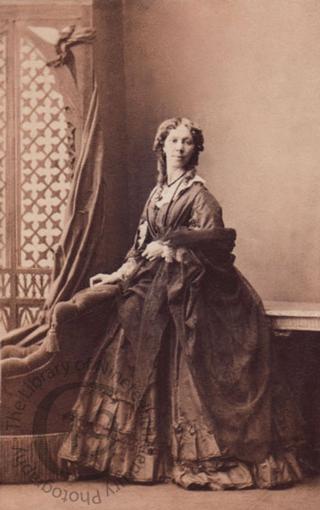
Mrs Frederick Lehmann
A carte-de-visite portrait of Mrs Frederick Lehmann (1830-1902).
Born Jane Gibson Chambers, but always known as ‘Nina’, her father was Dr Robert Chambers of Edinburgh. One of the most interesting intellectuals of the nineteenth century, he was a publisher, geologist, naturalist, proto-evolutionary thinker, author and journal editor. His Vestiges of the Natural History of Creation was so controversial that his authorship was not acknowledged until after his death.
‘She married Frederick Lehmann, also musical but an able business man who made a fortune out of the American wars. It was a very happy marriage, and Nina's letters show her to have been a devoted mother, who romped with her children inside and out, giving them as much time and attention as any modern mother. […] Frederick Lehmann came from a distinguished and artistic family, his father Henri a friend of Liszt and of Ingres. […] He joined the firm of NaylorVickers and made a great deal of money in the American Civil War apparently organising arms supplies to the government side. […] When he returned they settled in London where their Westbourne Terrace house became the centre of literary and musical life. […] Nina enjoyed the money, the company, the stimulations of the London scene, but she also loved getting away with her four children to the Isle of Wight, there to write ecstatically happy letters to Frederick of walks on the sands and shrimp teas. Then at the age of thirty-four she was forced to seek a cure in the South of France for a inflammation of the lungs, a dangerous complaint which could easily have turned into T.B.’ [From Iris Macfarlane’s biography of Robert Chambers, available online at www.alanmacfarlane.com].
Her social circle included Robert Browning, George Eliot, Lord Leighton and John Everett Millais. Charles Dickens was a close friend and Wilkie Collins dedicated his novel Man and Wife to the Lehmanns.
Mrs Lehmann was also a gifted musician. Wilkie Collins once said that after Mrs Lehmann, Halle was the best pianist in England.
Photographed by Camille Silvy of London on 27 March 1861.
Code: 125879




